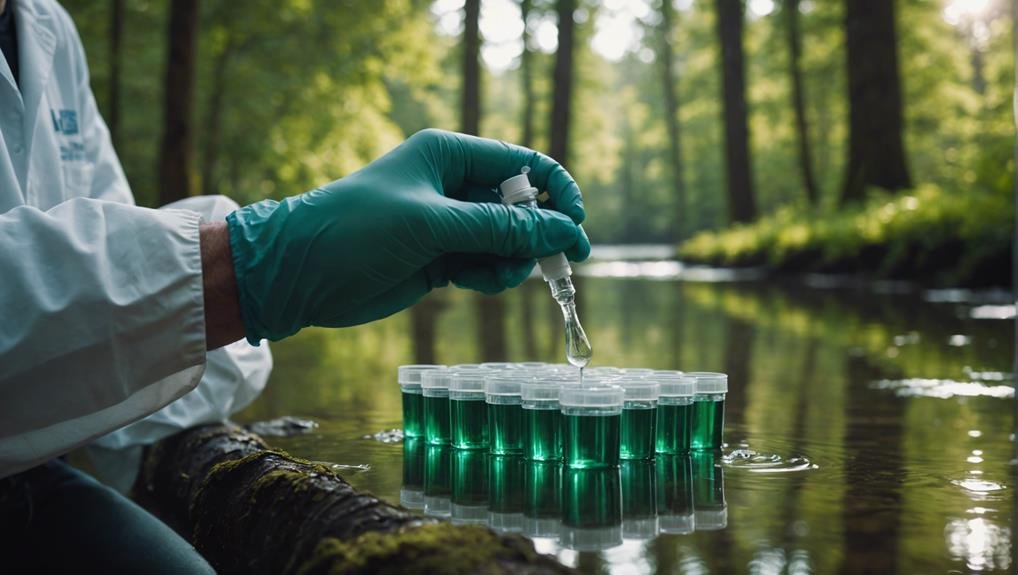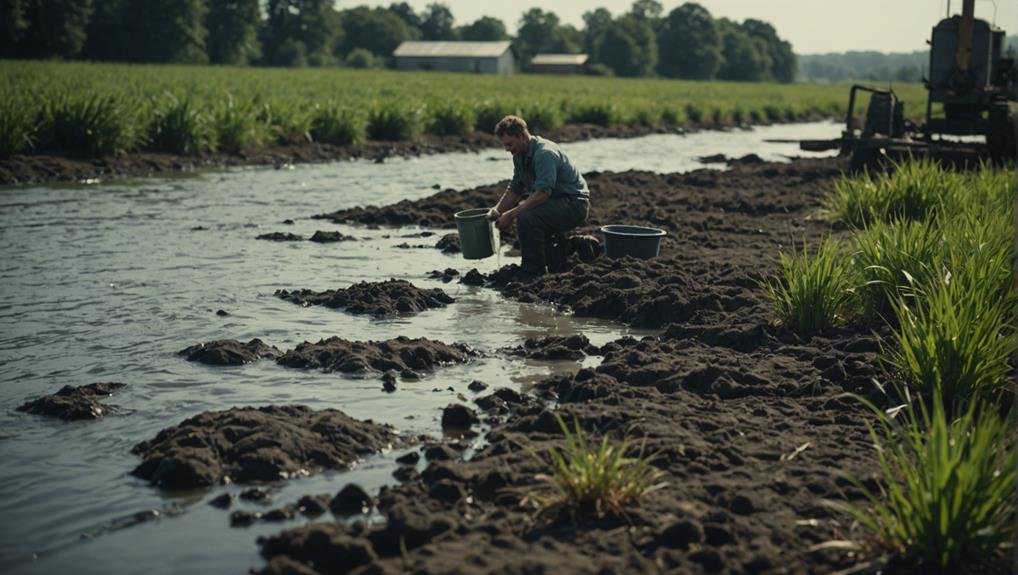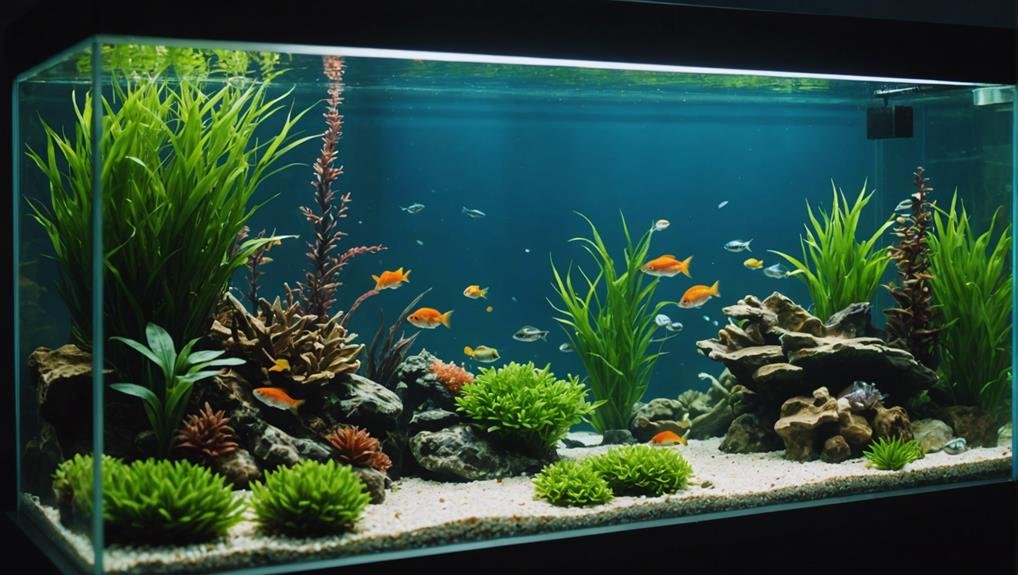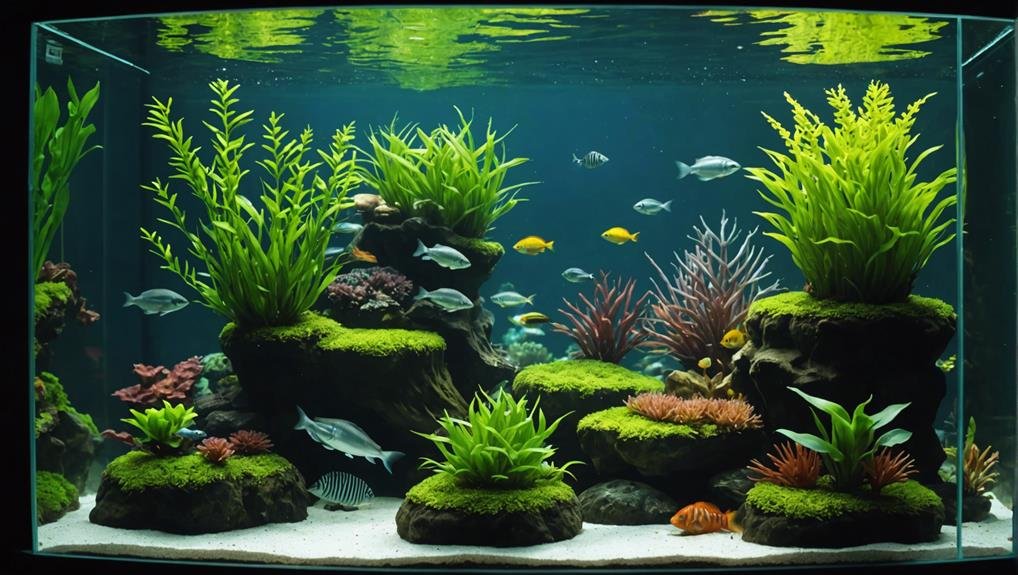Testing for nitrate levels in water requires the use of test kits, such as simple test strips for quick checks or colorimetric tests for more accurate results.
It is crucial to collect samples properly by running cold water first, using clean containers, and keeping samples cool. The Environmental Protection Agency (EPA) considers 10 mg/L as the safe limit for nitrates in drinking water.
If test results show high nitrate levels, it is advisable to retest at a certified laboratory for confirmation.
To control nitrate levels, incorporating live plants into the water system can help naturally absorb nitrates. Additionally, using nitrate-adsorbing media like zeolite is an effective method.
It is essential to reduce nitrate sources such as agricultural runoff and properly maintain septic systems to prevent further contamination. By addressing these factors, it is possible to manage and lower nitrate levels in water effectively.
For more in-depth information on nitrate testing and control measures, further resources and guidance are available for a better understanding and implementation.
Understanding Nitrate Levels
Understanding nitrate levels in water is crucial for ensuring its safety and preventing health risks. Nitrates are measured in milligrams per liter (mg/L) and significantly impact water quality. The Environmental Protection Agency (EPA) has established the safe drinking water standard for nitrates at 10 mg/L. Exceeding this limit can result in severe health issues such as methemoglobinemia, commonly known as 'Blue Baby Syndrome,' particularly dangerous for infants.
Regular nitrate testing is essential to uphold safe water quality, especially for individuals with private wells lacking oversight from municipal water treatment facilities. By grasping the sources and levels of nitrate in our water, we can implement effective control and management strategies to guarantee safety. Nitrate concentrations originate from various sources like agricultural runoff, septic systems, and industrial waste, underscoring the importance of vigilant monitoring.
In order to maintain safe water quality, individuals should consider utilizing nitrate testing kits, such as those offered by reputable brands like LaMotte or Hach. These kits provide accurate and reliable results, enabling proactive measures to be taken if nitrate levels exceed the recommended threshold.
Choosing a Nitrate Test Kit
Understanding the significance of monitoring nitrate levels, the next step is to choose the right nitrate test kit. When selecting a test kit, consider the water source type and the required detection limit.
Simple test strips are suitable for quick assessments, providing fast but less precise nitrate concentration readings. For more accurate measurements, particularly in sensitive environments like aquariums, consider colorimetric tests.
Factors such as ease of use, cost, and sensitivity should be taken into account. Test kits differ in their detection range, with some capable of measuring nitrates across a wide range of concentrations, making them versatile for various applications, from aquarium testing to environmental monitoring.
It is essential to ensure that the chosen test kit matches the specific application. A highly sensitive aquarium test kit can detect even minor nitrate level changes, safeguarding the health of fish. For well testing, a broader detection range may be necessary to ensure water safety.
Collecting Water Samples

For accurate nitrate testing, it's crucial to follow specific guidelines when collecting water samples. Start by running the cold tap for 5-10 minutes before sampling to ensure fresh water is collected. Fresh samples are less likely to be contaminated, providing a true representation of nitrate levels.
It is essential to use the designated sample containers provided by the lab to prevent contamination and maintain the integrity of the results. Proper sample collection is key to accurate testing, so using the correct containers is vital.
After collecting the water samples, keep them cool during transport to preserve the nitrate levels and avoid any changes due to temperature fluctuations. Maintaining cool temperatures will yield more reliable results once the samples reach the lab.
Interpreting Test Results
After collecting and transporting our water samples correctly, it's essential to interpret the test results to determine the nitrate levels in our water. The Environmental Protection Agency (EPA) and the Minnesota Department of Health (MDH) consider nitrate levels below 10 parts per million (ppm) safe for drinking water. If the test results show nitrate levels below this threshold, our water is generally safe to drink. However, if the nitrate levels exceed 10 ppm, especially if infants under six months will consume the water, immediate action is necessary to ensure everyone's safety.
When interpreting the test results and finding high nitrate levels, it's crucial to re-test at a certified lab to confirm the initial findings before taking further action. If the nitrate levels are indeed above 10 ppm, investigating well characteristics to identify potential sources of contamination is important. Understanding these sources can help effectively address the problem.
In cases where high nitrate levels persist, installing water treatment units designed to reduce nitrate concentrations can make our drinking water safe again. These units filter out nitrates, ensuring that our water meets safe drinking water standards. Regular monitoring will help maintain safe nitrate levels over time.
Causes of High Nitrate

High nitrate levels typically stem from various sources such as agricultural runoff, sewage discharges, and industrial effluents. When fertilizers are used in agriculture, they can be carried into water sources by rainfall, leading to nitrate contamination. Sewage discharges and industrial effluents also contribute significantly to elevated nitrate levels by introducing large amounts of nitrogen compounds into the water.
For instance, agricultural runoff containing fertilizers and animal waste can result in high nitrate levels in water bodies. Similarly, sewage discharges, which include human waste and detergents, can exacerbate nitrate contamination. Industrial effluents, stemming from manufacturing processes, also play a role in raising nitrate concentrations in water sources. Additionally, nitrate pollution can be attributed to animal waste from livestock operations and poorly maintained septic systems.
The consequences of high nitrate levels are concerning, as they can lead to environmental issues like eutrophication and algae blooms, disrupting aquatic ecosystems. Moreover, nitrate pollution poses health risks, particularly to infants and pregnant women, underscoring the importance of monitoring and managing nitrate levels to safeguard water quality and public health.
Reducing Nitrate Through Water Changes
Regular water changes are a simple and effective way to manage and decrease nitrate levels in aquariums, creating a healthier environment for fish and invertebrates. It's recommended to perform a water change of 10-20% every 1-2 weeks to help lower nitrate levels and enhance water quality.
Testing nitrate levels before and after water changes is crucial to monitor progress and adjust the frequency and volume of water changes. This proactive approach ensures a balanced aquatic environment. Moreover, through regular water changes, essential minerals and nutrients are replenished, supporting overall aquarium health and stability.
Consistent water changes also help prevent nitrate buildup, minimizing the negative impact of high nitrate levels on aquatic life. By diluting pollutants, water changes maintain water quality, creating a safe and harmonious habitat for aquarium inhabitants. Incorporating this routine into maintenance practices is vital for keeping nitrate levels in check and promoting the well-being of marine life.
Adjusting Feeding Habits

Adjusting feeding habits in our aquariums plays a crucial role in managing waste and controlling nitrate levels. To start, offering small, frequent meals can help minimize leftover food that may decay and raise nitrate levels in the tank.
Avoiding overfeeding is key to maintaining water quality. When fish are given more food than they can consume, excess food sinks to the bottom and decomposes, releasing nitrates into the water. Establishing a consistent feeding schedule allows us to observe fish behavior and determine appropriate portion sizes for optimal nutrition without excess leftovers.
Opting for specialized fish feed can also make a significant difference. These feeds are designed to reduce nutrient leaching and improve digestion, ultimately decreasing nitrate production.
Regularly removing uneaten food and detritus from the tank is equally important to uphold water quality standards and prevent organic waste from leading to nitrate accumulation.
Benefits of Live Plants
Live plants in our aquariums serve as essential filters by absorbing nitrates, which helps maintain a healthier aquatic environment. These plants play a crucial role in water quality by utilizing nitrates as a nutrient for their growth, ultimately creating a self-sustaining ecosystem that benefits both fish and plants.
Through the process of photosynthesis, live plants uptake nitrates and convert them into nutrients, effectively reducing nitrate levels in the aquarium. This natural nitrate reduction process is key to keeping our tanks clean and well-balanced.
Popular nitrate absorbers like Hornwort, Anacharis, and Java Moss, as well as rooted plants such as amazon sword and dwarf hairgrass, play a significant role in this nitrate control.
To maximize nitrate reduction, it's advisable to plant a combination of floating and rooted plants in the aquarium. Finding the right balance between plant growth and fish population is crucial for effective nitrate control.
While an excess of fish can lead to higher nitrate levels, too many plants without adequate fish may result in nutrient deficiencies. By managing both aspects carefully, we can ensure a stable and thriving aquatic environment.
Live plants not only enhance the visual appeal of the aquarium but also contribute significantly to its overall health and balance.
Using Nitrate-Adsorbing Media

Managing nitrate levels in aquariums is crucial, and one effective method is using nitrate-adsorbing media. These specialized materials help lower nitrate levels by capturing and removing them from the water. By holding onto nitrates, they prevent these compounds from harming fish and plants in the aquarium.
There are different types of nitrate-adsorbing media, such as zeolite, ion-exchange resins, and specific filter pads. Each of these materials has unique properties that make them efficient at trapping nitrates and enhancing water quality. It's essential to regularly replace or recharge these media to ensure their continued effectiveness.
Zeolite functions by trapping nitrates through ion exchange, while ion-exchange resins attract and retain nitrates. Specialized filter pads are designed to target nitrates specifically. Replacing or recharging these media as needed is crucial for maintaining optimal water quality in the aquarium.
Conclusion
In essence, it's crucial to keep nitrate levels in check for a thriving aquatic environment.
By choosing a reliable test kit, regularly testing water samples, and accurately interpreting the results, we can catch any potential issues early on.
High nitrate levels often stem from overfeeding or infrequent water changes, but incorporating live plants and nitrate-adsorbing media can help mitigate this problem effectively.
With these strategies in place, we can ensure that our aquatic habitats remain healthy and vibrant, preventing nitrate levels from reaching harmful levels.

